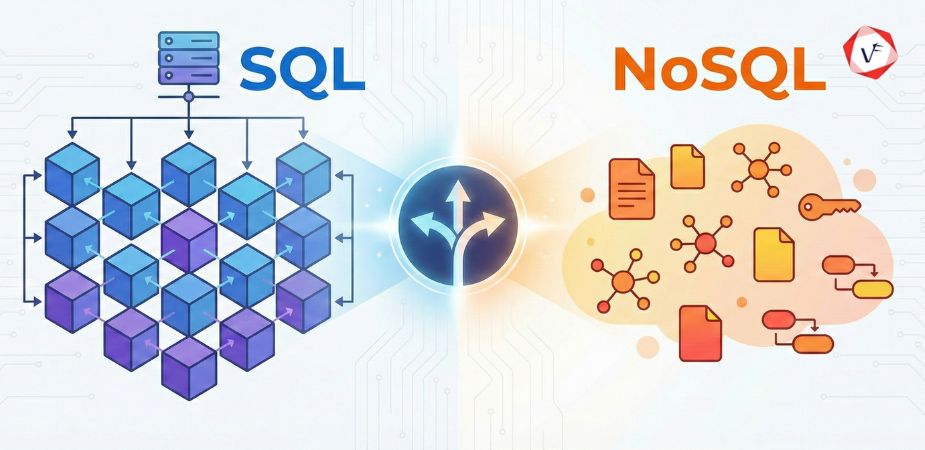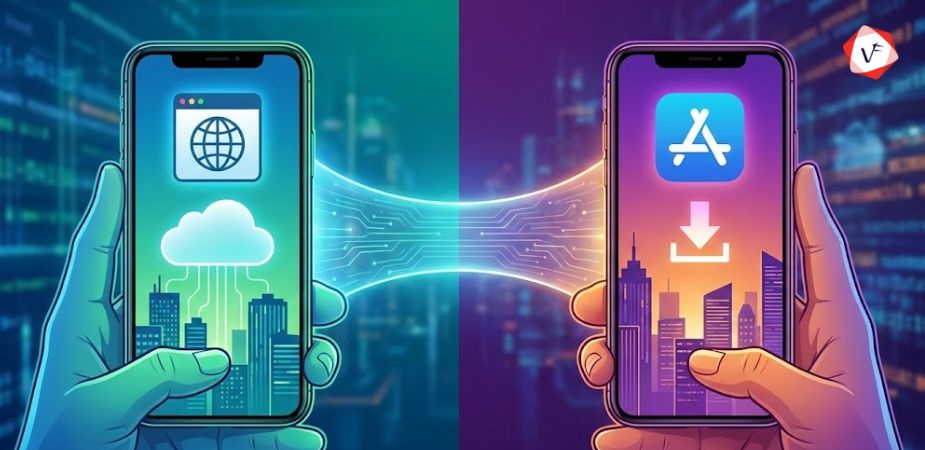
- May 30, 2025 2:39 pm
- by Safvana
2025 Trends & Predictions for Web3
- May 30, 2025 2:39 pm
- by Deepthy
Web3 has emerged as the next evolution of the internet, built on blockchain technology, decentralization, and user sovereignty. As we move into 2025, the Web3 landscape is set to experience significant shifts driven by advancements in decentralized finance (DeFi), non-fungible tokens (NFTs), smart contracts, DAOs, metaverse applications, and regulatory frameworks. The increasing adoption of cryptocurrencies, decentralized applications (dApps), and Web3 wallets suggest that 2025 will be a transformative year for businesses, developers, and users alike.
In this article, we will explore the top trends and predictions for Web3 in 2025, focusing on the growing impact of blockchain technology, the expansion of decentralized networks, enhanced security protocols, and the mainstream adoption of Web3 applications.
Web3 Trends & Predictions 2025
1. The Expansion of Decentralized Finance (DeFi) in 2025
One of the most promising Web3 trends in 2025 is the continued rise of decentralized finance (DeFi). Over the past few years, DeFi platforms have revolutionized traditional finance by enabling permissionless lending, borrowing, staking, and yield farming without intermediaries like banks. In 2025, we expect:
- Increased Institutional Adoption: More financial institutions will integrate DeFi protocols into their operations, leading to hybrid models combining traditional finance (TradFi) with DeFi services.
- Cross-Chain Interoperability: With innovations like Layer 2 solutions, cross-chain bridges, and multi-chain ecosystems, DeFi protocols will allow seamless asset transfers across different blockchain networks.
- Advanced Security Measures: Due to past security breaches and exploits, DeFi platforms in 2025 will prioritize smart contract audits, decentralized identity verification (DID), and regulatory compliance to protect users from fraud.
As DeFi evolves, Web3 developers will focus on creating more scalable, efficient, and interoperable decentralized financial solutions, making blockchain-based finance more accessible to a broader audience.
2. Mainstream Adoption of Decentralized Applications (dApps)
The adoption of decentralized applications (dApps) will accelerate in 2025, fueled by enhanced scalability, improved user experience, and real-world applications in industries like gaming, finance, healthcare, and social media. Key drivers include:
- User-Friendly Web3 Interfaces: Traditional Web3 onboarding processes have been complex, but 2025 will see the rise of intuitive Web3 wallets, gasless transactions, and one-click logins to enhance the user experience.
- Enterprise Adoption of dApps: Businesses are increasingly exploring smart contracts, decentralized cloud storage, and blockchain-based authentication to enhance security and transparency.
- Scalability Improvements: Ethereum 2.0 upgrades, zk-Rollups, and sidechains will play a crucial role in reducing transaction costs and increasing transaction speeds for dApps.
With these improvements, Web3 adoption in 2025 will no longer be limited to crypto enthusiasts but will attract mainstream users, businesses, and developers looking for secure and transparent alternatives to traditional web applications.
3. The Evolution of Non-Fungible Tokens (NFTs) Beyond Art and Collectibles
NFTs (Non-Fungible Tokens) have already disrupted the digital art world, but in 2025, NFT technology will expand into new areas such as:
- Real Estate & Tokenized Assets: Property ownership and real-world assets (RWA) tokenization will become common, allowing fractional ownership of physical assets using blockchain-based NFT smart contracts.
- Gaming & Play-to-Earn (P2E) Models: NFT-powered metaverse platforms and blockchain gaming ecosystems will redefine digital ownership, enabling players to earn real value from in-game assets.
- Music, Licensing, and Intellectual Property: Musicians, content creators, and brands will use NFTs for digital rights management (DRM), royalty distribution, and secure licensing of intellectual property.
As more industries recognize the potential of NFTs beyond art, the Web3 ecosystem in 2025 will see NFT adoption across various real-world use cases, making NFT marketplaces and platforms more dynamic and inclusive.
4. The Growth of DAOs (Decentralized Autonomous Organizations) in Governance
Decentralized Autonomous Organizations (DAOs) are redefining how communities, companies, and projects operate in a transparent, democratic, and decentralized manner. In 2025, DAO governance models will expand due to:
- Corporate DAO Integration: Businesses will leverage DAOs for decision-making, voting rights, and decentralized treasury management to enhance efficiency and reduce bureaucracy.
- Regulatory Clarity for DAOs: Governments and regulatory bodies will begin formalizing legal structures for DAOs, providing clarity on taxation, compliance, and governance rights.
- Community-Led Ecosystems: Open-source development projects, decentralized media platforms, and Web3 gaming ecosystems will rely on DAOs for fundraising, community proposals, and decentralized governance.
The widespread DAO adoption in 2025 will make decentralized governance a mainstream approach for organizations looking to implement transparent and community-driven decision-making.
5. Web3 and AI: The Convergence of Decentralization & Artificial Intelligence
The combination of Web3 and AI will unlock new possibilities in 2025, bringing decentralized machine learning models, AI-powered smart contracts, and on-chain AI assistants to the forefront. Key trends include:
- AI-Driven Smart Contracts: Blockchain-based AI solutions will automate complex transactions, analyze data trends, and optimize contract execution in DeFi and enterprise applications.
- Decentralized AI Marketplaces: Web3 will enable the creation of peer-to-peer AI model marketplaces, where developers can share, monetize, and improve AI models without centralized control.
- Personalized Web3 Experiences: AI will enhance Web3 gaming, DeFi trading, and NFT marketplaces by offering customized recommendations and automated interactions tailored to user preferences.
The intersection of Web3 and AI in 2025 will lead to more intelligent, autonomous, and efficient decentralized applications, paving the way for the next generation of Web3-powered services.
6. Enhanced Security & Privacy in Web3
As Web3 adoption grows, so does the need for robust security measures, privacy-focused protocols, and zero-knowledge proof (ZKP) solutions. In 2025, security trends will include:
- Zero-Knowledge Proofs (ZKPs) for Enhanced Privacy: Users will gain greater control over their data using ZKPs, enabling identity verification without exposing sensitive information.
- Decentralized Identity (DID) Solutions: Web3 identity verification systems will reduce reliance on centralized authentication, minimizing the risks of data breaches.
- Improved Web3 Security Standards: Bug bounties, smart contract audits, and decentralized cybersecurity solutions will become industry norms to combat fraud and cyberattacks.
The emphasis on security and privacy in Web3 will foster trust among users, developers, and businesses, making decentralized ecosystems safer and more resilient in 2025.
7. The Role of Web3 in the Metaverse and Digital Ownership
The metaverse is expected to become a multi-trillion-dollar industry by 2025, with Web3 technology playing a crucial role in shaping digital economies, immersive experiences, and decentralized virtual worlds. The integration of blockchain, NFTs, and decentralized applications (dApps) will revolutionize the way people interact in virtual spaces.
Key Web3 Metaverse Trends in 2025:
- Decentralized Virtual Worlds: Blockchain-powered metaverse platforms such as Decentraland, The Sandbox, and Otherside will continue expanding, offering NFT-based land ownership, decentralized governance, and tokenized assets.
- Interoperable Digital Assets: Cross-metaverse asset portability will become a reality, allowing users to own and transfer digital goods, avatars, and NFT-based items between different virtual worlds.
- Metaverse Workspaces & Commerce: More businesses will establish virtual offices, e-commerce hubs, and immersive digital storefronts using smart contracts and Web3 payment systems to facilitate seamless transactions.
As Web3 gaming, play-to-earn (P2E) economies, and decentralized social platforms become mainstream, the metaverse in 2025 will redefine digital ownership, virtual real estate, and online interactions.
8. Regulatory Changes & Compliance in Web3
As Web3 adoption grows, so does the need for regulatory clarity. Governments and financial institutions worldwide are actively working on frameworks for cryptocurrency taxation, DeFi regulations, and NFT compliance.
Expected Web3 Regulatory Trends in 2025:
- Legal Frameworks for DAOs & DeFi: Many jurisdictions will implement regulations for decentralized finance (DeFi) platforms, ensuring compliance with anti-money laundering (AML) and know-your-customer (KYC) protocols.
- NFT & Crypto Taxation Laws: Non-fungible token (NFT) sales, crypto transactions, and digital asset holdings will be subject to structured tax policies, preventing illicit activities.
- Stablecoin Regulations & CBDCs: Governments will push for central bank digital currencies (CBDCs) as a regulatory-friendly alternative to algorithmic stablecoins and decentralized financial instruments.
9. Web3 Infrastructure & Layer 2 Scaling Solutions
Scalability and transaction efficiency remain critical challenges for Web3 platforms, but 2025 will witness groundbreaking innovations in Layer 2 scaling, cross-chain interoperability, and decentralized storage.
Technological Advancements in Web3 Infrastructure:
- Ethereum 2.0 Full Deployment: The final implementation of Ethereum's Proof-of-Stake (PoS) mechanism, sharding, and Layer 2 solutions will dramatically improve transaction throughput and reduce gas fees.
- Zero-Knowledge Rollups (ZK-Rollups) for Faster Transactions: ZK-Rollups and Optimistic Rollups will dominate Web3 scaling solutions, ensuring efficient, low-cost blockchain transactions.
- Decentralized Cloud Computing & Storage: IPFS (InterPlanetary File System), Arweave, and Filecoin will play a major role in Web3 data storage, enabling censorship-resistant, decentralized file-sharing.
10. The Rise of Web3 Social Media & Decentralized Content Platforms
Traditional social media platforms like Facebook, Instagram, and Twitter have faced growing concerns about data privacy, censorship, and centralized control. Web3 social media platforms aim to disrupt this model by offering user-owned, censorship-resistant, and decentralized alternatives.
Web3 Social Media Trends in 2025:
- Decentralized Social Networks: Platforms such as Lens Protocol, Farcaster, and DeSo (Decentralized Social) will empower users with data ownership and blockchain-based monetization models.
- Tokenized Content & Creator Rewards: Web3 content platforms will integrate NFT-powered royalties, play-to-earn mechanisms, and decentralized autonomous publishing (DAPs) to reward content creators fairly.
- Censorship Resistance & Privacy: Decentralized identity (DID) solutions and blockchain-encrypted messaging will ensure secure, anonymous communication and free speech across Web3 social networks.
Final Thoughts
The Web3 landscape in 2025 will be marked by the expansion of DeFi, the mainstream adoption of dApps, the evolution of NFTs, the growth of DAOs, and the convergence of AI and decentralization. With ongoing innovations in blockchain scalability, decentralized identity, and security enhancements, Web3 applications will become more accessible, efficient, and widely adopted across multiple industries. For businesses looking to leverage Web3 development, Vofox's Web3 development services provide blockchain solutions, smart contract development, and decentralized application expertise to help organizations thrive in the decentralized future of the internet. Get started on your journey by speaking to our experts today.


